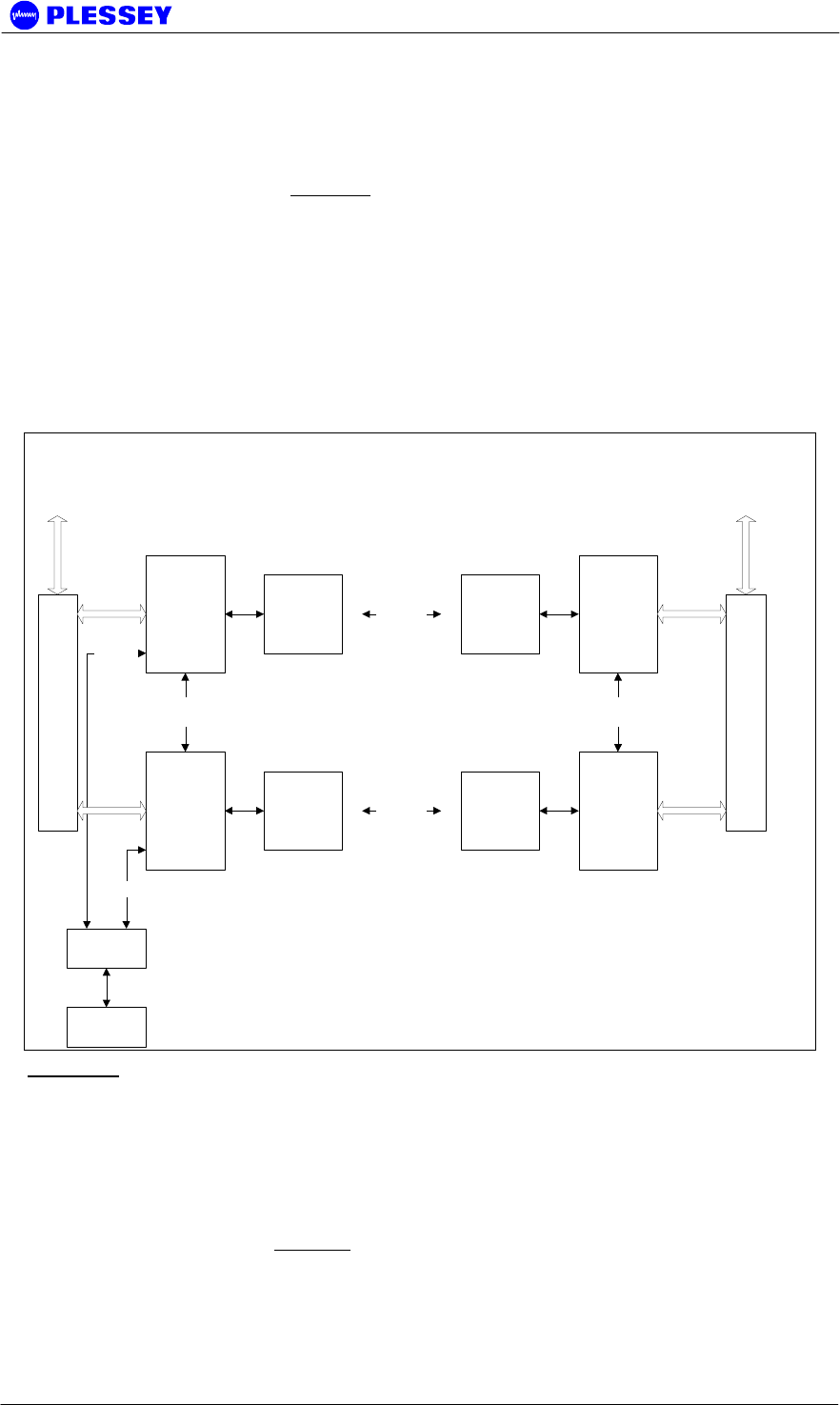User's Manual

MDR2400-SR, MDR5800-SR and Orion 5825-SR
Issue 10 Page 123
each link in the redundant system separately through the Element-Manager port of
each local Indoor Unit, in which case it is not necessary to assign unique IP addresses
to the Indoor Units.
The block diagram in Figure 10
also clearly illustrates the following important
interfaces:
• IU A to IU B connection through the respective Auxiliary ports of the four Indoor
Units
• The Protection Panel interfaces on each side of the link that combines and splits
the tributary payload channels between the two radio links
• The single user network interfaces provided by the Protection Panel
• The two radio links that provide the redundancy required for user data
protection
IDU 1 A
IDU 1 B
IDU 2 A
IDU 2 B
ODU ODU
ODU ODU
RF Link A
RF Link B
HUB
Ethernet
Tributries
AUX Port
Cross Connect
Ethernet
Network Port IP Addr
192.168.1.2
Network Port IP Addr
192.168.1.4
Network Port IP Addr
192.168.1.3
Network Port IP Addr
192.168.1.5
Config PC
Tributries
AUX Port
Cross Connect
One-Plus-One Redundancy System
Protection Panel
Splitter/Combiner
Protection Panel
Splitter/Combiner
Figure 10: Block diagram of a typical redundancy protected system where the radio links
are managed through an Ethernet network.
1U Protection Panel
There are two types of protection panels: a four and an eight tributary channel panel.
They operate in the same way and perform the signal splitting and combination
functions for the tributary channels taking part in the redundancy protected radio
system. Note from Table 13:
Protection Kit connector interfaces. that the Protection
Kit is currently only provided in 110-ohm as a compromise to make provision for E1
and T1 mode.










